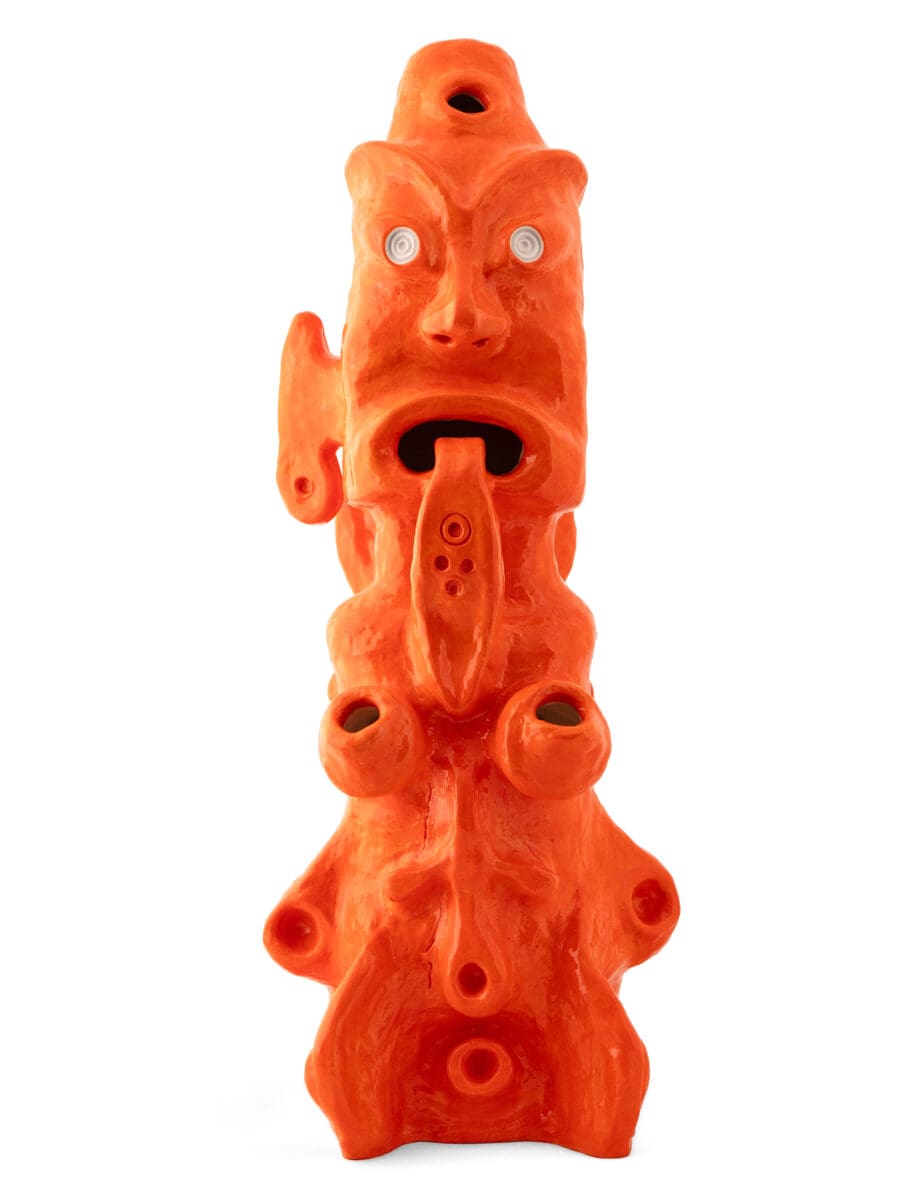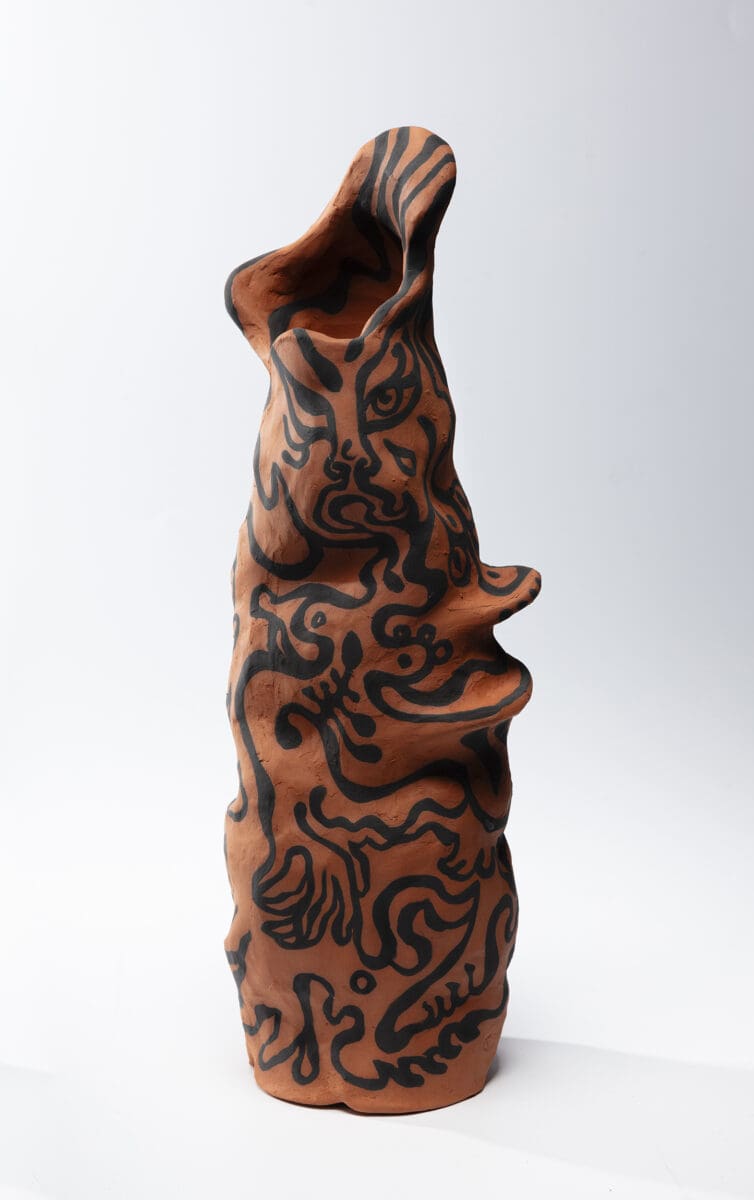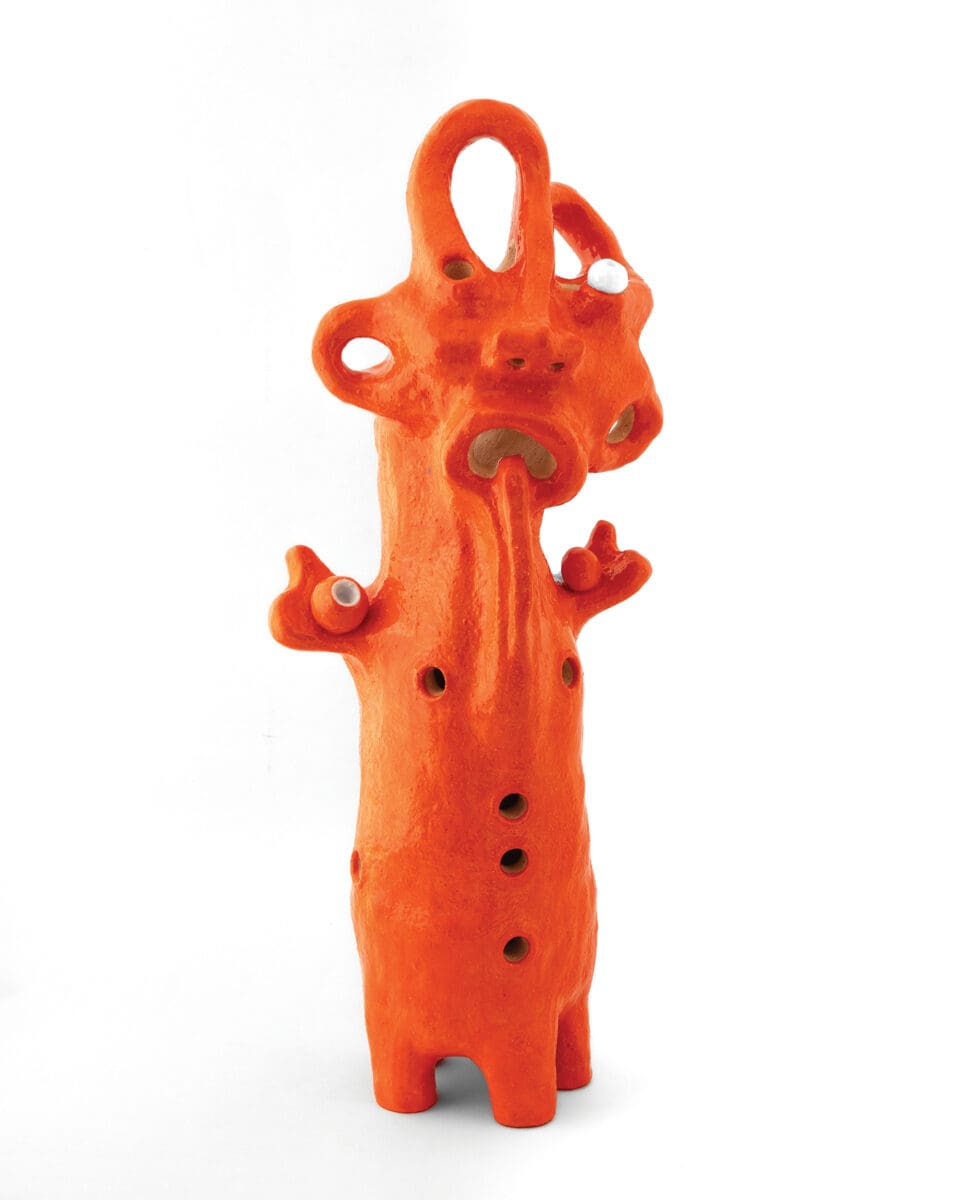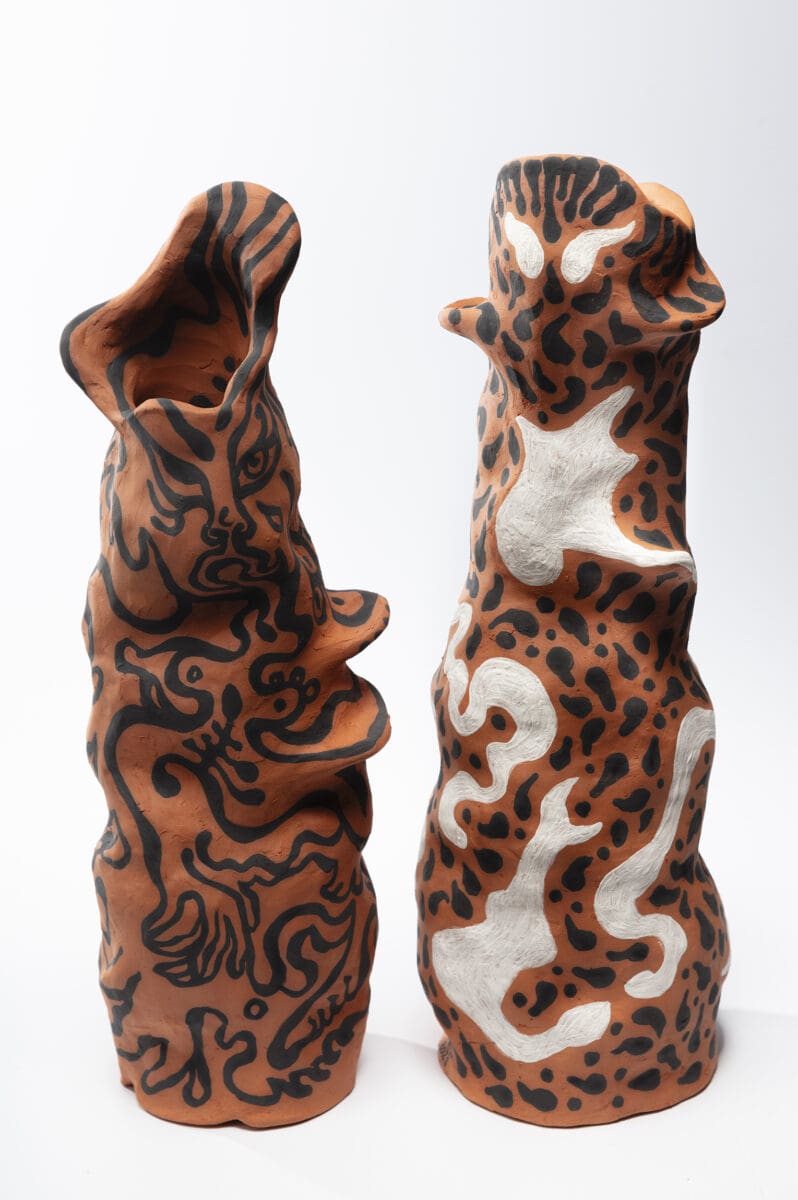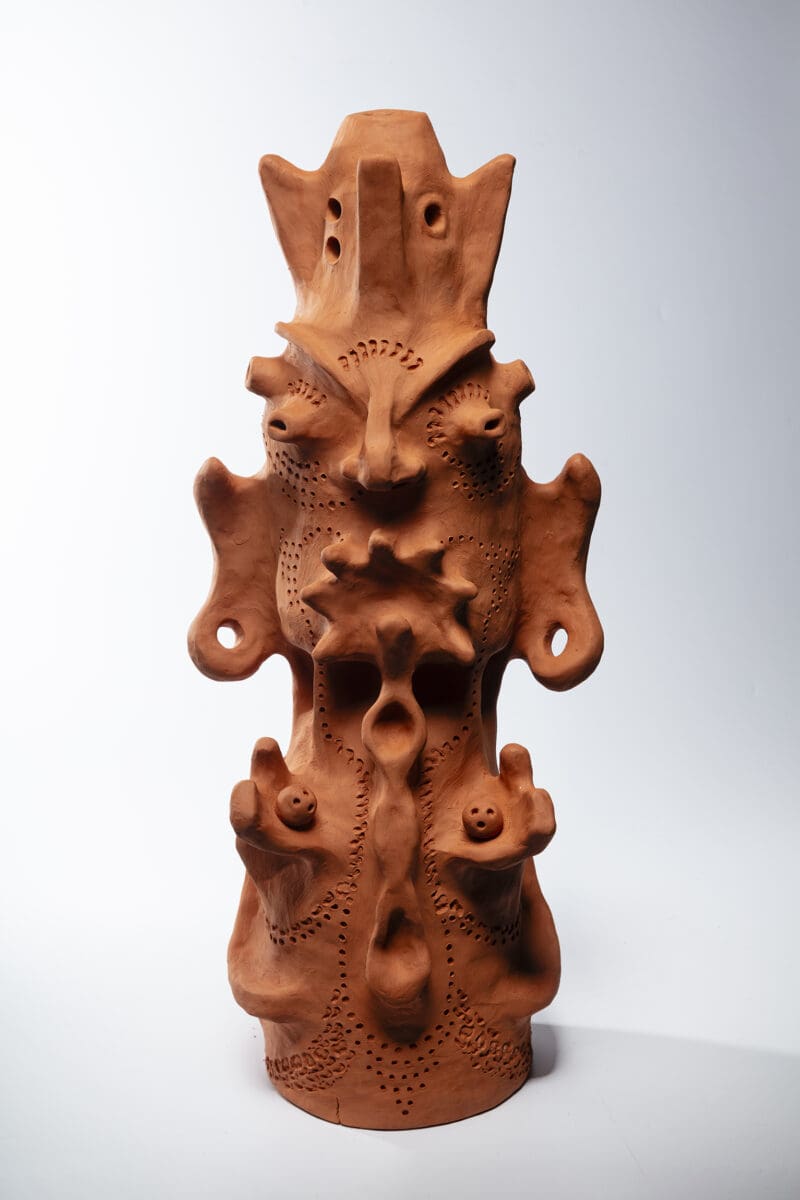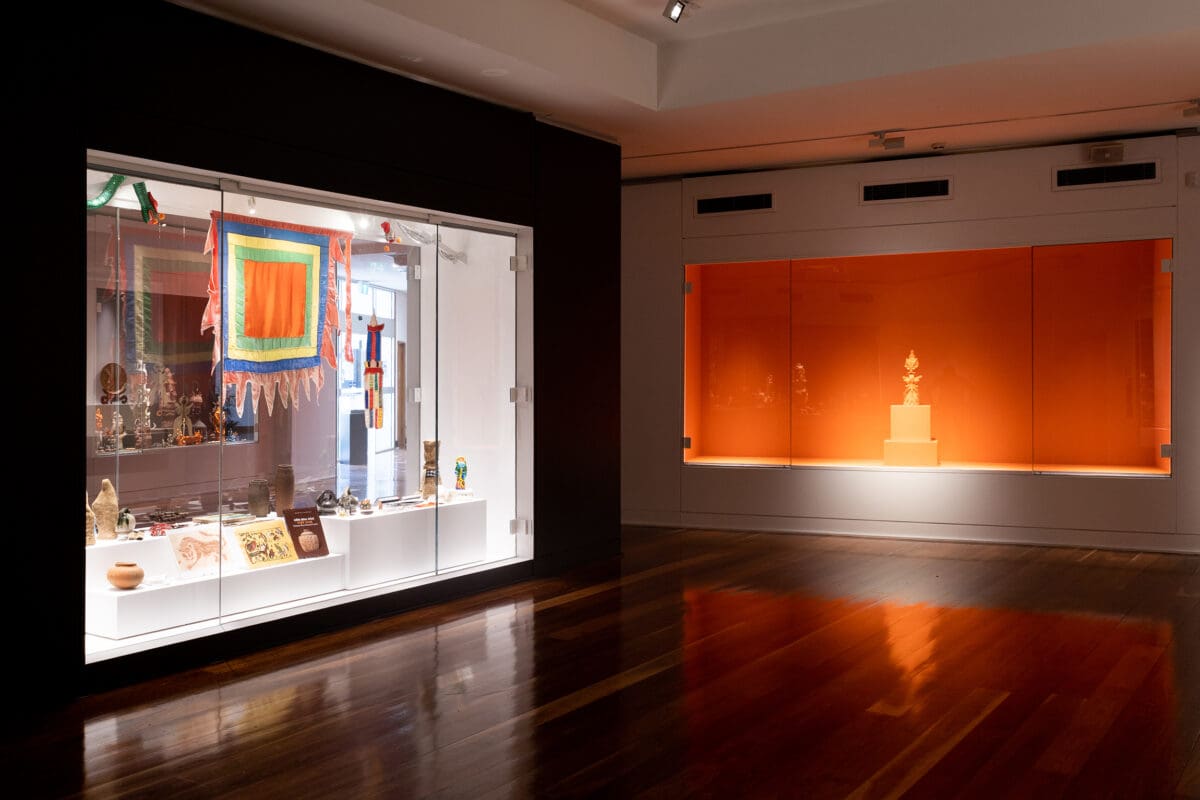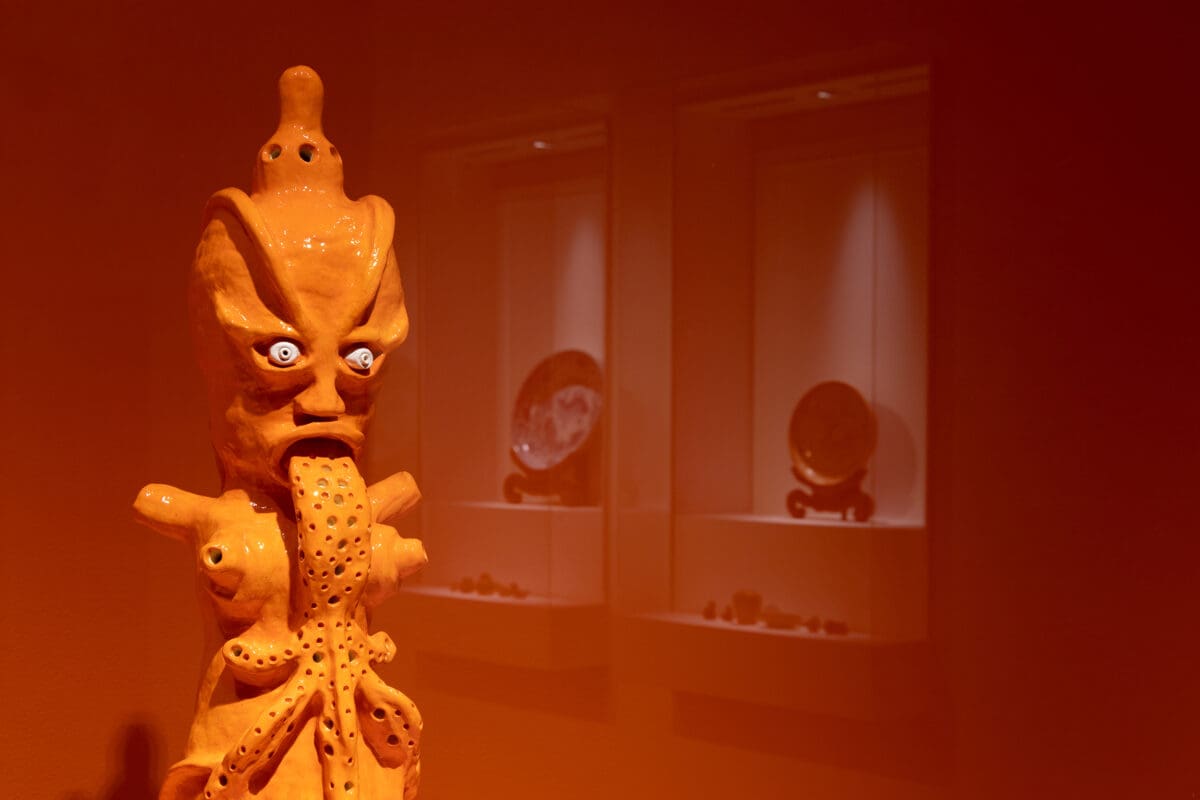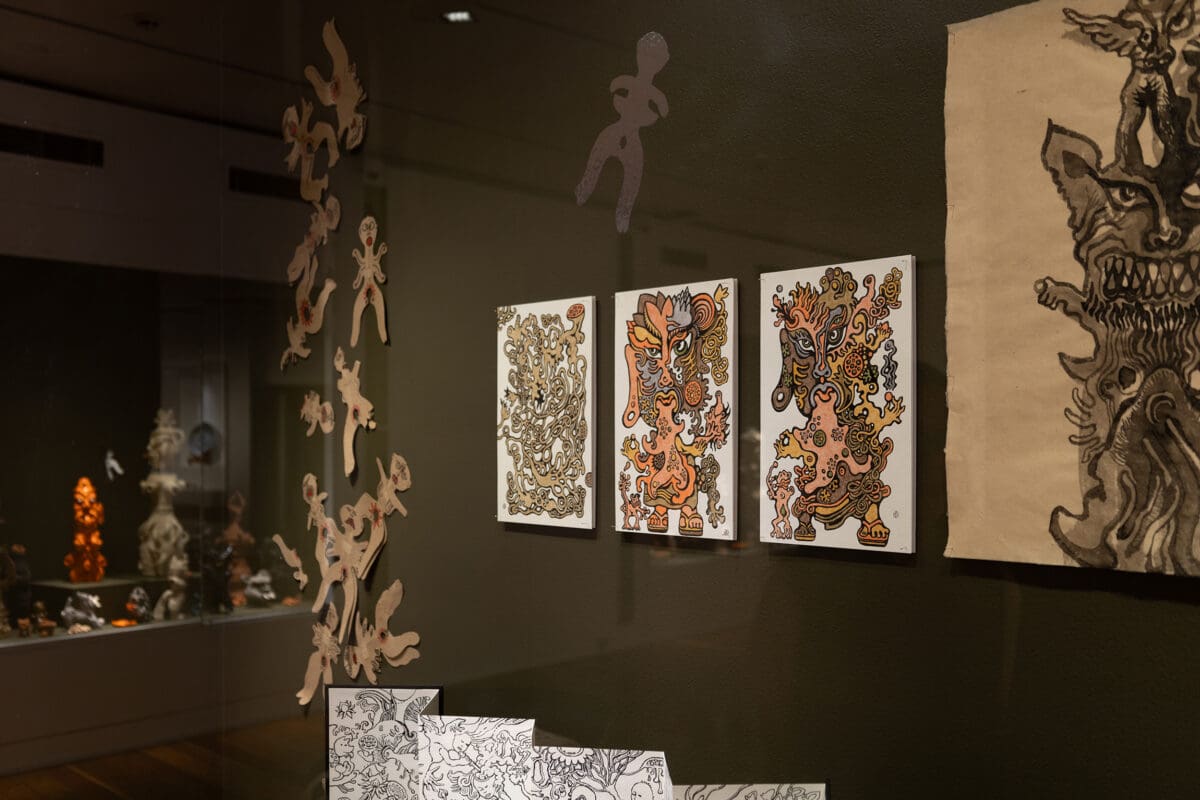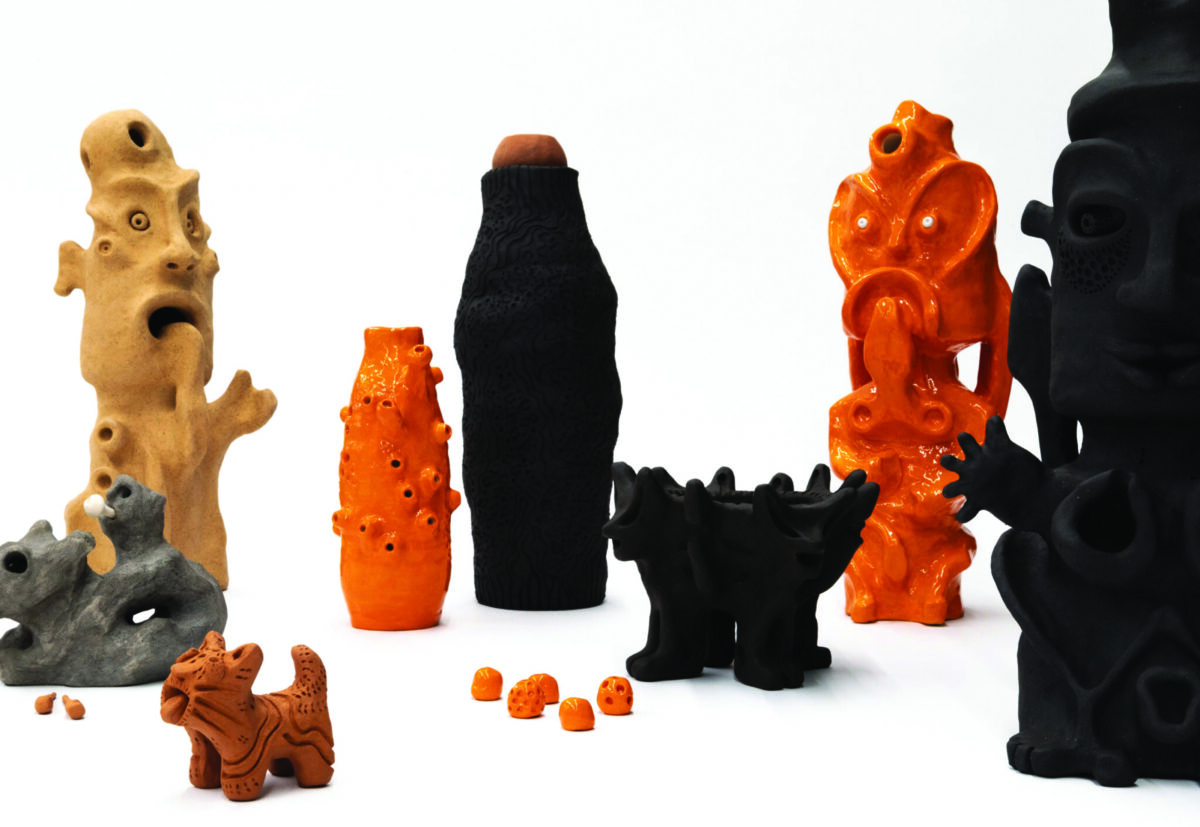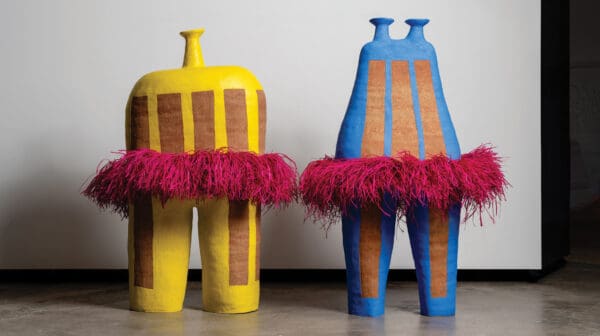Mai Nguyễn-Long’s work is about reclamation. The artist, who was born to a Vietnamese father and Australian mother, studied Asian art history at university, and quickly realised that Vietnamese art was rarely discussed. Curious, she travelled there in her early twenties to find out more about it—and her cultural history—firsthand.
There, art became not only a concept, but a physical act, as she took classes and learned how to make things herself. “I was blown away by the đình wood carvings in the Red River Delta,” she remembers. “It really fed my imagination—I felt it was an avenue to a visual language and a way of imagining the world.”
A complicated relationship with the country and culture ensued when Nguyễn-Long returned to Australia and found herself feeling a separation from the Vietnamese community at home. But almost three decades later, she continues to create her own version of Vietnamese art, translating wood carving techniques to clay.
Kôgábịnô is her latest exhibition, harnessing the aesthetic of mộc mạc—literally ‘earthy’—as a means of resistance. “I wanted to insert mộc mạc as an art concept into my doctorate because otherwise there is always this external Western lens of looking at Vietnamese art,” Nguyễn-Long says. In a series of clay and earthenware sculptures, the central figure, Vomit Girl, speaks to the shame and trauma experienced by the diaspora.
Colour is also an important aspect—the bright orange hue often used alludes to the herbicide Agent Orange, known for its destructive impact on civilians during the Vietnam War. Decades later, its impacts are still felt. “Orange became the dominant pop of colour amongst the unglazed, natural terracotta look,” she explains. “To me, it is this ongoing trauma that keeps having ripples forever.”
Kôgábịnô
Mai Nguyễn-Long
Wollongong Art Gallery
On now—7 April


